February 2018
A Quarterly Update on the Organization of Scientific Area Committees for Forensic Science
In this issue
- OSAC Affairs
- Forensic Science Standards Board (FSSB)
- Human Factors Committee
- Legal Resource Committee
- Quality Infrastructure Committee
- Statistics Task Group
- Biology/DNA Scientific Area Committee
- Chemistry/Instrumental Analysis Scientific Area Committee
- Crime Scene/Death Investigation Subcommittee
- Digital/Multimedia Scientific Area Committee
- Physics/Pattern Interpretation Scientific Area Committee
- Why Good Standards Take Time: A Perspective From the Chair of OSAC's Human Resources Committee
OSAC Affairs
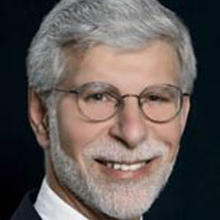
OSAC is working with the forensic science community to strengthen the nation’s use of forensic science by facilitating the development of high-quality forensic science standards that are fit-for-purpose, consensus-based, and scientifically sound. OSAC does this by bringing together more than 550 members and 325 affiliates in virtual and in-person meetings. OSAC participants debate the technical merit and scientific underpinnings of existing standards, collaborate to develop new clearly written draft standards, and challenge each other to generate documents that will move individual forensic science disciplines forward. This interface is enabled through a staff of seven federal employees at NIST who support the 34 OSAC operating units and empower them to make a difference.
Membership
There are 25 forensic science disciplines in OSAC with membership that includes practitioners, laboratory managers, academic researchers, metrologists, statisticians, human factors experts, accreditation and standards development experts, attorneys, and judges. This diverse group represents federal, state, and local agencies, academic institutions, and private sector entities from all 50 states. When you add in the Affiliates, there are representatives from more than a dozen countries. OSAC Affairs is very grateful for all the members, affliates, and guests who volunteer their time to benefit the forensic science industry.
Accomplishments
Over the past year, OSAC has claimed many successes.
• National Institute of Justice incorporated OSAC published R&D needs into their solicitation process.
• OSAC work products are being converted into published standards:
• American Dental Association (ADA) document.
• Academy Standards Board (ASB) documents.
• OSAC launched the Technical Publication Series to publish OSAC work products.
• OSAC started a monthly Standards Bulletin to update stakeholders about the standards in process within an SDO and/or the OSAC Registry.
In the near future, OSAC, along with the Quality Infrastructure Committee (QIC), will publish a beta version of the OSAC lexicon. The initial launch will be open to the public for use and updates. We are encouraging the public to provide updates, additions, deletions, and corrections as the lexicon will be a living tool that will be updated frequently, so our community has the best resource available. OSAC is finalizing our Implementation Plan so we can help the industry implement OSAC endorsed standards.
Transformations
As any organization grows, it learns that processes grow and evolve. OSAC is no exception. We have revamped some of our processes, such as enabling subcommittees to post documents submitted to SDOs on their website for the public to use, clarifying and improving the Registry Approval process, providing enhanced guidance and communications through webinars, online training, and reference tools, and generating process maps to streamline internal OSAC processes. Additionally, as part of our outreach efforts, we completed the 2nd annual OSAC Leadership Strategy Session, which brought together our Executive Board, SAC, RC, and STG Chairs, committee members, and OSAC Affairs to set priorities and provide future direction for all of OSAC operations and deliverables.
Future Plans
As we look forward to another productive year, OSAC has set some essential goals of its own, such as:
• Internal and external engagement of OSAC with our members, our stakeholders, and the entire forensic community.
• Along with the FSSB and QIC, publish a beta OSAC-preferred lexicon.
• Continue making progress on the 200+ draft standards and guidelines in the pipeline.
• Increase the number of standards on the OSAC Registry.
• Continue to introduce new and updated standards into existing SDOs.
OSAC would like to thank all OSAC members for their hard work, dedication, and volunteerism to strengthen the use of science and science-based standards in our nation’s criminal justice system. Now let’s get to work.
Forensic Science Standards Board (FSSB)
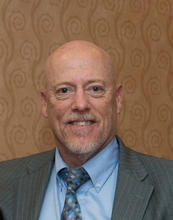
WHO ARE WE?
The FSSB has recruited some new members and achieved a good balance of stakeholder representatives to ensure multiple points of view are considered when addressing any issue. The FSSB is composed of:
• SAC chairs and Resource Committee chairs.
• Professional forensic science organization representatives with members in total exceeding 20,000.
• Researchers and academics.
The FSSB is proud to have three new members whose qualifications add significantly to the experience and expertise of the Board:
• Dr. David Fowler, Chief Medical Examiner, OCME, State of Maryland and NAME Representative.
• Melissa Gische, FBI Physical Scientist/Forensic Examiner and Physics/Pattern Interpretation SAC Chair.
• Ray Wickenheiser, NY State Police Crime Laboratory System Director and ASCLD Representative.
New FSSB Chair Steve Johnson (IAI Rep) replaced Jeremy Triplett (ASCLD Rep) October 1, 2017.
WHAT ARE WE?
OSAC produces a Registry of endorsed forensic science standards, informs the forensic science community of research needs and gaps, publishes valuable information gathered during the standards analysis process in the new OSAC Technical Publications Series, and engages in interdisciplinary projects to harmonize processes, terminology and reports across forensic science disciplines.
OSAC Registry Approvals:
• Currently 8 standards on the OSAC Registry and 4 in the final approval process.
• More than 200 items currently in the pipeline.
• Partnering with SDOs including ADA, ASB, ASTM, ISO, and NFPA.
OSAC Technical Publication Series was established at NIST in 2017:
• OSAC Technical Series 0001: 2017 OSAC Annual Report
• OSAC Technical Series 0002: A Framework for Harmonizing Forensic Science Practices and Digital/Multimedia Evidence
WHERE ARE WE GOING?
Introducing OSAC Organizational Priorities to members:
• Short-term and long-term strategic plans and roadmaps for the FSSB and SACs.
• OSAC engagement with our members, stakeholders and the entire forensic science community.
• Publish an OSAC-preferred lexicon.
• Expand interdisciplinary projects across disciplines.
• Publish a Foundations Report.
• Publish a Standards Implementation Action Strategy.
Human Factors Committee
In 2017, the HFC focused on three major issues: (1) practical ways to reduce the potential for contextual bias through the use of context management procedures; (2) best practices for testing the performance of forensic examiner for validation, quality assurance and training; and (3) improving communication of forensic science findings to lay audiences. The HFC discussed these issues with a number of OSAC subcommittees, commented on proposed OSAC documents, and in some instances commented on documents under review at Standards Developing Organizations (SDOs) outside of OSAC. An important issue for many forensic scientists is when (and whether) it makes sense to use blinding or masking procedures to shield examiners from contextual information in order to reduce the potential for bias. The HFC has helped OSAC members address these issues by providing reference materials, sharing examples of successful practices, raising issues and making suggestions. HFC members and affiliates have also been engaged in helping some laboratories do research on these issues. This interaction has prompted three HFC members and one affiliate to publish academic articles discussing task-relevance and context management in forensic science.
Human performance is another important issue for forensic scientists. Because many forensic science methods depend critically on expert judgment, testing the accuracy of those methods for purpose of validation necessarily involves testing human performance. Assessment of human performance is also vital in quality assurance and training. Drawing on the extensive experience of HFC members, and the scientific literature on human performance testing, the HFC has produced a set of guidelines on how to design and carry out better studies of examiner performance in forensic science. These guidelines will help forensic scientists who want to do such research to do it better; they are not intended to mandate such research.
The HFC has been deeply involved in discussions of standards for reporting forensic science findings, focusing particularly on reporting of source conclusions. HFC members and affiliates have been engaged in research on lay perception of scientific evidence that is directly relevant to the question of how best to communicate forensic science findings to a lay audience. Through interactions with various OSAC subcommittees the HFC has worked to make forensic scientists aware of what the psychological literature can tell us about lay perception of forensic science findings. Interactions at OSAC have also helped HFC members become more knowledgeable about critical communications issues in forensic science and this knowledge has helped them conduct studies that are more directly relevant to the forensic science community. An HFC priority for 2018 is developing a guidance document that identifies and discusses strengths and weaknesses of a wide variety of different methods for reporting source conclusions.
Testing Human Performance: HFC Guidance on Research Methods
An extensive new HFC document provides guidance on testing the performance of forensic examiners on routine analytical tasks, such as comparing items to determine whether they have (or might have) a common source, or classifying items by category. Currently being reviewed as a possible OSAC Technical Publication, the document is designed to help forensic scientists design and carry out better studies of their own performance and thereby improve both quality assurance and the scientifc foundations of the field.
Task-Relevance: When Should Context be Considered?
The HFC has helped a number of OSAC subcommittees consider the proper basis for examiners’ opinions, particularly the tricky issue of when the examiner should (and should not) consider information beyond the physical characteristics of the items being examined, such as contextual or investigative facts.
Legal Resource Committee
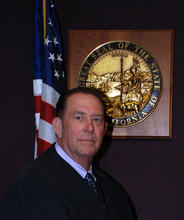
The OSAC Legal Resource Committee (LRC) continues with its core mission to provide legal guidance to the 25 OSAC subcommittees as to the usability and legal ramifications of forensic science standards under development. The LRC focus includes meaningful advice as to the reporting and the presentation of forensic science results as well as legal admissibility issues.
The LRC is made of eleven attorneys who have specialized expertise in forensic science and in particular how the forensic science disciplines are used in the courts. LRC members are leaders in their respective fields representing different segments of the American criminal justice system including federal and state prosecutorial agencies, the criminal defense bar, legal academia, the national innocence network and the judiciary. Each LRC member has considerable legal experience and expertise in issues that arise in litigating scientific issues in our courts. The LRC looks at the possible impact of the standards on the legal system. Some of the LRC considerations are:
1. Does the standard address the documentation and preservation of underlying materials and data?
2. Are the technical terms used in the standard defined within the document? If not, does the standard or guideline refer the reader to definitions published elsewhere?
3. Are the directives of the standard or guideline specific and clear as to what they require or recommend?
4. Are the error rates associated with the technique, when applied as prescribed or recommended, estimated? If so, how? If not, why not?
5. Does the standard allow for the expert to offer an opinion in a quantitative, probabilistic form? If so, what is the scientific basis for the probability?
6. Are there any adverse appellate court rulings on the admissibility of the technique? If so, does the standard address the concerns identified in the court opinion(s)?
ACCOMPLISHMENTS:
• Educating OSAC forensic science practitioners on legal disclosure (Brady) requirements.
• The publishing of a forensic statistical paper, “Hypothesis Testing in Law and Forensic Science: A Memorandum” by LRC member David Kaye. [Harvard Law Review, Forensic Commentary Series, Vol. 130, No. 5, pg. 127-136, Mar. 2017. https://harvardlawreview.org/2017/03/hypothesis-testing-in-law-and-forensic-science-a-memorandum/]
GOALS:
• Developing OSAC educational outreach to members of the legal profession.
• Publishing guidance documents for use by OSAC forensic science practitioners.
Quality Infrastructure Committee
Accomplishments of 2017:
The QIC:
• Revised several of the OSAC processes this past year. The OSAC Comment Adjudication Procedure was revised to ensure that Subcommittee’s clarify and confirm comments prior to the formal adjudication.
• Revised the Registry Approval Process map. Changes included (1) eliminate swim lanes; (2) provide decision paths if the document is interdisciplinary; (3) include Resource Committees and Statistics Task Group earlier in the process; (4) renamed the “Public comment” to “Open Comment”; (5) inserted a formal exit box.
• Developed and implemented a QIC checklist for review of draft OSAC work products.
• Developed and distributed a SAC and FSSB Checklist for Registry Approval.
• Provided input and comments on 45 draft OSAC documents circulated to the Resource Committees.
• QIC representatives were assigned as Ex-Officio members to each SAC. A QIC liaison was appointed to work with the LRC, HFC, and STG.
• Updated the OSAC Catalog of External Standards and Guidelines available on the OSAC website. Created a streamlined version of the catalog that only contains voluntary consensus standards for OSAC internal use.
• Established and oversaw three Ad Hoc Appeals Panels and issued decisions on the appeals.
The most significant accomplishment of the QIC was the revision of the Technical Merit Worksheet. The FSSB approved the revised QIC Technical Merit Worksheet V5e1, Jan. 3, 2018. The worksheet has been renamed the Technical Merit Discussion Guidance and Worksheet and should be used by all units from this point forward.
The Technical Merit Discussion Guidance and Worksheet is one of the required forms in the Registry Approval Packet, for the approval of final published standards from SDOs to be posted on the OSAC Registry. The goal of the OSAC Registry is to highlight forensic science standards that have sound technical merit. The standards have technical merit (by meeting established criteria) and were developed using a "reasonable standards development process." The Worksheet may be used when drafting standards to ensure that the main criteria are covered and to determine if a standard has sufficient technical merit to be included on the OSAC Registry. OSAC units shall debate/discuss the merits of a standard and harmonize different points-of-view, when possible, through discussions.
The Technical Merit Discussion Guidance and Worksheet captures:
• Strengths and weaknesses of a standard under consideration for the OSAC Registry.
• Discussions of the Task Group, Subcommittee, and SAC for the criteria listed.
• Any concerns expressed by the Statistics Task Group and the OSAC Resource Committees.
OSAC Lexicon
In 2016-2017, OSAC Subcommittees and SACs collected terms and definitions, related to their disciplines. Terms were consolidated into a single database application. The QIC Terminology Consolidation Task Group formed in 2017 was tasked to clarify source references and to create an online database. The OSAC Lexicon will be launched as an online database application with searching and sorting capabilities.
Goals/Priorities for 2018:
• Continue work on the OSAC Lexicon.
• Coordinate a consensus opinion on 15 terms identied by the FSSB 29 Terms Task Group.
• Improve the Registry Approval Process by (1) Implementing an Impact Assessment Report for Open Comment; (2) Simplify the liaison role in Working with an SDO Process; (3) Update the Process Descriptions.
Statistics Task Group
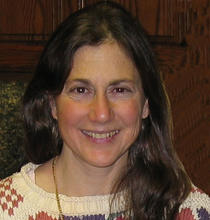
The Statistics Task Group (STG) is comprised of the statisticians who serve on OSAC units. Its mission is to ensure the proper use of statistical methods in the forensic science standards that are posted on the OSAC Registry.
Over the last six months, the Statistics Task Group has been involved in the review of many draft standards. During its reviews, STG has confronted the recurrent issue of the appropriate criteria for the determination that trace and control materials are "indistinguishable", particularly when the determination is based on the chemical characteristics of the evidence material. Cedric Neumann (Materials (Trace) Subcommittee), Will Guthrie (Chemistry/Instrumental Analysis SAC), and Cli Spiegelman (Gunshot Residue Subcommittee) are members of a new Task Group (led by José Almirall) that aims to develop statistically rigorous methods to test hypotheses in the context of high-dimensional chemical compositional data measurements.
On a broader scale, Christopher Saunders (Forensic Document Examination Subcommittee), worked with the Center for Statistical Applications in Forensic Evidence (CSAFE) to organize a Symposium on Error Rates held on January 18-19, 2018 in Arlington, VA. Error rate studies are key to establishing validity in many expert-opinion-based forensic disciplines. Speakers at this symposium discussed classical approaches to forensic evidence interpretation as well as recent methods arising from the machine learning and biometrics communities on presenting strength of forensic evidence through the use of error rates. Many of the Symposium presenters were members of the Statistics Task Group (STG), including Hal Stern (Physics/Pattern Interpretation SAC), Will Guthrie (Chemistry/Instrumental Analysis SAC), David Kaye (Legal Resource Committee), Mark Lancaster (Forensic Document Examination Subcommittee), JoAnn Buscalia and Austin Hicklin (current and former members of FSSB), and Alicia Carriquiry (STG alffiate); symposium participants included other STG members also (Steven Lund, Footwear and Tire Subcommittee). The organizers plan to write and distribute a summary of the findings from this Symposium which will provide foundations for interpreting and communicating the results of forensic examinations that ultimately will be implemented widely at OSAC.
OSAC units who would like feedback from STG on matters related to the need for and proper use of statistical methods in their standards, are invited to communicate with STG members early in the process to achieve the full benefit of statistical advice for their disciplines.
Biology/DNA Scientific Area Committee
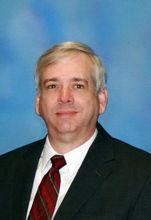
The Biology/DNA Scientific Area Committee (SAC) was extremely productive and active throughout 2017. The three Subcommittees, Biological Methods, Biological Data Interpretation and Reporting, and Wildlife Forensics all added new affiliates to assist with development of new draft standards. New subcommittee members were selected to replace those whose term had ended or who were unable to continue participation in OSAC. All members of the SAC were engaged in reviewing and providing guidance to the three subcommittees on various documents that were under development. Several new research topics were identified and considered by the SAC. All of the research and development topics which have been approved can be found on the SAC website.
Members of the SAC and Subcommittees continue to work closely with SWGDAM by sharing draft documents for input.
Highlights in 2017:
The SAC approved several documents from the Subcommittees. A full listing of all of the documents in progress can be found on the Committee’s website.
Biological Methods Documents sent to Academy Standards Board (ASB):
• DNA Analyst Training
• Internal Validation of Forensic DNA Analysis Methods
• Internal Validation of Human STR Proling on Capillary Electrophoresis Platforms
Biological Data Interpretation and Reporting Documents sent to Academy Standards Board (ASB):
• Probabilistic Genotyping System Validation Standards
• Validation Studies for DNA Mixtures and Verication of a Laboratory’s Mixture Interpretation Protocol
Wildlife Forensics Documents sent to Academy Standards Board (ASB):
• Morphology
• DNA Sequencing
• STR analysis
Goals for 2018:
The SAC looks forward to completing work on draft standards related to software validations, formulating propositions for likelihood ratios, training for serological methods, training for STR analysis using capillary electrophoresis, prevention and mitigation of DNA contamination, DNA interpretation and comparison protocols, geographic assignments of animals, development of reference collections and databases used in wildlife forensics.
The SAC is also hopeful that the documents currently under consideration at the ASB will be finalized as standards and can then be considered for inclusion on the OSAC registry.
The SAC is also looking to the future by forming task groups within the appropriate subcommittees to examine and develop draft standards on topics such as familial DNA, Rapid DNA, and Next Generation Sequencing (NGS).
Chemistry/Instrumental Analysis Scientific Area Committee
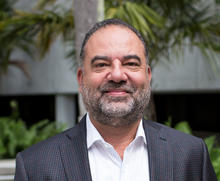
The Chemistry SAC is comprised of six (6) Subcommittees that are very active in the development and evaluation of documentary standards. The SAC has created task groups to evaluate technical issues of importance across the different chemistry disciplines. The primary responsibility of the SAC is to evaluate the scientific underpinnings of all standards before these can be recommended to the registry and to approve the list of published research needs for the discipline. Although innovation and improvements to ASTM standards are ongoing, the basic science in the existing ASTM methods is sufficiently developed and mature such that laboratories should be using them.
Highlights specific to Subcommittees within the SAC are provided below:
Fire Debris and Explosives Subcommittee – Look Out for Changes to E1618 Coming Soon!
Existing ASTM standards are being updated and revised through the SDO process in order to elevate them to the expectations of Registry documents. Two new terminology documents (for fire debris analysis and for explosives analysis) are making their way through ASTM. New documents on the QA/QC of laboratories performing re debris analysis; guides for systematic approaches to the analysis of re debris and intact explosives; and, report writing are nearing the SDO process. A position statement on E1618 was issued.
Geological Materials Subcommittee – First New Standard Headed to SDO Soon!
Our first new document, Standard Guide for the Collection of Soils and Other Geological Evidence for Forensic Applications, is nearly ready to be sent to ASTM. During the past year the Subcommittee added two new members and is planning on adding a third in the near future. In addition, several new task groups were created this past year and as a result there are a number of new documents being drafted by the Subcommittee. A list of the documents being drafted or planned is now available on the website.
Gunshot Residue Subcommittee – A New Look at an Old ASTM Standard!
A more aggressive approach has been undertaken to examine how organic GSR analysis may be used to complement the more traditional inorganic GSR analytical practices. One of our primary efforts is to usher ASTM 1588 through the approval process for the OSAC Registry. This document will provide the Forensic GSR community with a consistent set of guidelines for casework. A literature review of GSR analysis by SEM/EDS is being conducted with searchable keywords to provide a list of variables to be used in future experimental designs and metadata analysis.
Materials (Trace) Subcommittee – A Standard Test Method Makes it on the Registry!
ASTM E2926-13: Standard Test Method for Forensic Comparison of Glass Using Micro X-ray Fluorescence (-XRF) Spectrometry was added to the OSAC Registry in July, 2017. An Interpretation document has been drafted for trace evidence disciplines: fibers, glass, hair, paint, and tape, which is being readied for submission to an SDO. A multidisciplinary outreach task group has completed a draft document of crime scene trace evidence collection guideline which is being readied for public comment. Research needs for the trace evidence community are being revised for posting on the website. Training guides for hair, paint, and tape are with an SDO for consideration as standard guides. Numerous ASTM guides are being evaluated and updated as part of their mandated 5-year review.
Seized Drugs Subcommittee – Request for Comments on Qualitative Analysis of MS Data Standard!
The Subcommittee welcomed 4 new members—3 state/local practitioners and 1 academic researcher. The Subcommittee also voted and forwarded a revised version of ASTM E2329 Standard Practice for the Identification of Seized Drugs to the OSAC Registry. Comments received during the Registry open comment period are being discussed and adjudicated by the Subcommittee. The Subcommittee has also been actively working on a new document titled "Assessment of Gas-Chromatography-Electron Ionization Mass Spectrometry Data for the Qualitative Analysis of Seized Drugs". A draft of this document will be made available on the website for public review prior to submission to an SDO.
Toxicology Subcommittee – Making Progress in the ASB!
The draft document Standard for Breath Alcohol Measuring Instrument Calibration was completed by the Subcommittee and forwarded to the ASB. A primer on Forensic Toxicology was developed and placed on the Subcommittee’s webpage as a resource to OSAC members unfamiliar with the topic.
Chemistry SAC Documents on the OSAC Registry
E2329-14 (Drugs), E2548-11e1 (Drugs), E2926-13 (Glass)
Several Other Standards Documents in the Pipeline
Toxicology SC , Breath Alcohol (Measuring Instrument Calibration)
In review by the Academy Standards Board (ASB) of the AAFS
Crime Scene/Death Investigation Subcommittee
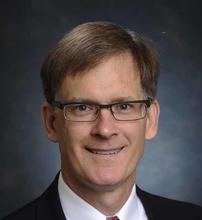
The Crime Scene/Death Investigation SAC provides strategic direction, serves as a platform to integrate similar standards activities across multiple forensic science disciplines, and manages the activities of the following subcommittees:
• Anthropology
• Crime Scene Investigation
• Disaster Victim Identication
• Dogs and Sensors
• Fire and Explosion Investigation
• Medicolegal Death Investigation
• Odontology
The SAC and its subcommittees have settled into the consensus standards process. Members are interacting with others in OSAC with the goals of educating each other about what is and is not possible within a discipline and of improving practice. Six documents from the SAC are with an SDO.
Highlights of 2017:
Disaster Victim Identification
• 2 ASB documents submitted for public comment:
• Best Practice Recommendation 009, Examination of Human Remains by Forensic Pathologists in the Disaster Victim Identification Context, First Edition
• Forensic Anthropology in Disaster Victim Identification: Best Practice Recommendations for the Medicolegal Authority
Dogs and Sensors
• The AAFS Standards Board published ASB Technical Report 025, Crime Scene/Death Investigation – Dogs and Sensors – Terms and Definitions, First Edition, 2017.
• The SC is also working on guidelines for pest/insect detector canine teams in an effort to improve the performance, reliability and courtroom defensibility of detector dog teams.
Fire and Explosion Investigation
• NFPA approved an OSAC-suggested proposal to move toward a standard for Fire and Explosion Investigation Units.
• NFPA 921: 2017: Guide for Fire and Explosion Investigations was added to the OSAC Registry.
Odontology
• ANSI/ADA standard Human Age Assessment by Dental Analysis was approved.
Digital/Multimedia Scientific Area Committee
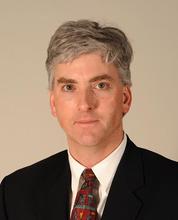
Highlights of 2017:
Research & Development Needs: 11
Discipline-Specic Baseline Documents: 37
Proposed New Standards Under the Jurisdiction of E30.12:
WK56121 * Standard Practice/Guide for Facial Recognition Systems: Capture Equipment and Specification (Technical Contact: Neal Gieselman)
WK57017 * Standard Practice/Guide for Facial Recognition Systems: Guidelines for Postmortem Facial Image Capture (Technical Contact: Neal Gieselman) Ballot E30 (17-05) Item 012
WK58704 * Facial Comparison Methods (Technical Contact: Lora Sims) Ballot E30 (17-05) Item 013
WK60382 * Forensic Audio Laboratory Setup and Maintenance (Technical Contact: David Hallimore) Ballot E30 (17-05) Item 014
WK61709 * Standard Practice for Data Retrieval from Digital CCTV System (Technical Contact: Mark Phillips)
Proposed New Standards Under Review Within the DMSAC:
• SWGDE Establishing Condence in Digital Forensic Results by Error Mitigation Analysis
OSAC Technical Publication Released
0002 -- A Framework for Harmonizing Forensic Science Practices and Digital/Multimedia Evidence
This document guides the systematic and coherent study of digital and multimedia evidence, to foster interdisciplinary dialog and to harmonize fundamental processes that are common across most forensic disciplines.
Priorities for 2018:
• Developing standards focusing on:
• Terminology
• Training standard that applies to multiple disciplines in OSAC
• Process Map for Forensic Speaker Recognition
• Seek liaison status for Speaker Recognition Subcommittee with ISO/IEC JTC1 SC37 WG
Physics/Pattern Interpretation Scientific Area Committee
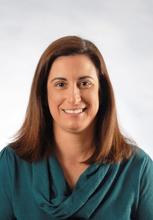
Highlights of 2017
Documents sent to SDO:
Bloodstain Pattern Analysis
• Quality Assurance
• Report Writing
• Terminology
• Validation
• Training and Education
Firearms and Toolmarks
• 3D Hardware
• 3D Implementation
• Topography Software
• Measurement Uncertainty for Barrel and Overall Length
Footwear and Tire
• Scope of Work
• Test Impressions
• Lifting of footwear and tire impression
Forensic Document Examination
• Scope of Expertise
Friction Ridge
• Articulation
• Training
Priorities for 2018:
Documents in progress:
Bloodstain Pattern Analysis
• Conclusion statements
• Taxonomy
• Certication
• Prociency Testing
• SOP
Firearms and Toolmarks
• Terminology
• Source Conclusions
• Physical Exam
Footwear and Tire
• Prociency Testing
• Minimum Qualications and Training
• Terminology
• Detection
• Documentation
Forensic Document Examination
• Alterations
• Training
• Evidence Assessment
• Handwriting
• Imaging
Friction Ridge
• Source Conclusions
• Examination Method
• Verication
• Technical Review
• AFIS Best Practices
Terms and Definitions in Bloodstain Pattern Analysis (ASB Technical Report 033, First Edition 2017) is first ASB publication
Bloodstain Pattern Analysis
PSAC members lead Interdisciplinary Virtual Subcommittees
Austin Hicklin - Source Conclusions framework
Louis Kriel - ACE-V Process Map
PSAC welcomes three new Subcommittee Chairs
Todd Weller (FATM)
Gerry LaPorte (FDE)
Henry Swoord (FR)
Why Good Standards Take Time: A Perspective From the Chair of OSAC's Human Resources Committee
By William C. Thompson, J.D., Ph.D., Emeritus, Criminology, Law, and Society School of Social Ecology, University of California Irvine
One of the complaints about OSAC 1.0 is that it is taking too long to create standards. This critique is based on the misconception that it is obvious what the standards should be and that all that is needed is to write them down. In reality, standards development is slow because developing good standards requires thoughtful deliberation and careful consideration of a number of difficult issues—issues that are best addressed with input from a variety of disciplinary perspectives. Thoughtful deliberation takes time and it requires a forum that brings together the right experts. In my view OSAC has created unprecedented opportunities for such deliberation. One might quibble with the details of its organizational structure and processes, but OSAC has undeniably brought the right people to the table where the right kinds of discussions are taking place.
A good example of this is the extensive discussions that have taken place between the HFC and many OSAC subcommittees on ways to reduce the potential for cognitive and contextual bias in forensic examinations. It became clear early in the process that questions about contextual bias were complicated by differing opinions about when and whether an examiner can properly consider contextual information when making a forensic assessment. This is a fundamental question about the proper basis for a forensic science opinion that, surprisingly, had not previously been analyzed or addressed in a systematic manner. If a forensic scientist is influenced by knowledge of the contextual information, such as investigative facts, when is that a “bias” and when is that a proper use of expert judgment?
Discussion of this issue within OSAC let to discussions between the members of the HFC and members of the National Commission on Forensic Science, which led the Commission to issue an important views document, entitled “Ensuring that Forensic Analysis is Based on Task- Relevant Information.” This documented offered a helpful conceptual analysis of how to distinguish information that is “task-relevant” and “task-irrelevant” for a forensic analysis. It suggested that OSAC subcommittees undertake the task of assessing what information is task-relevant and task-irrelevant for routine forensic examinations in each discipline. Using that document as a starting point, the HFC has held discussions with a number of OSAC subcommittees about delineating the proper basis for an examiner’s conclusions when performing various tasks. These discussions have often raised difficult questions that require input from legal experts about the role that a forensic expert should play in the criminal justice system. From my perspective, these discussions within OSAC are proceeding well and are laying the groundwork for appropriate standards of practice. Several subcommittees are taking steps to specify what information is task-relevant and task-irrelevant as part of proposed standards. In some instances, the proposed standards also include procedures for reducing or minimizing an examiner’s exposure to task-irrelevant information as a means of reducing the potential for bias.
My point is that discussions of this type are necessary before good standards can be written. One cannot successfully address the issue of contextual bias if one cannot rst specify what a “bias” is. Similar issues arise about other matters that will be addressed by standards. If the purpose of OSAC were simply to issue standards that codify current practices, then these discussions would not be necessary and standards could be issued quickly. Standards issued in this cursory manner, however, would not achieve OSAC’s ultimate goal of advancing forensic science; in some instances, they might not even be t-for-purpose. I think OSAC has the potential to advance forensic science greatly through thoughtful discussions that lead to the development of standards that IMPROVE on current practices. I think a lot of thoughtful discussions are taking place. I hope NIST will give this process time to work and will not disrupt it too much by attempting radical changes in OSAC’s structure. And I hope, in particular, that human factors specialists continue to have a seat at the table while these important discussions are underway.

